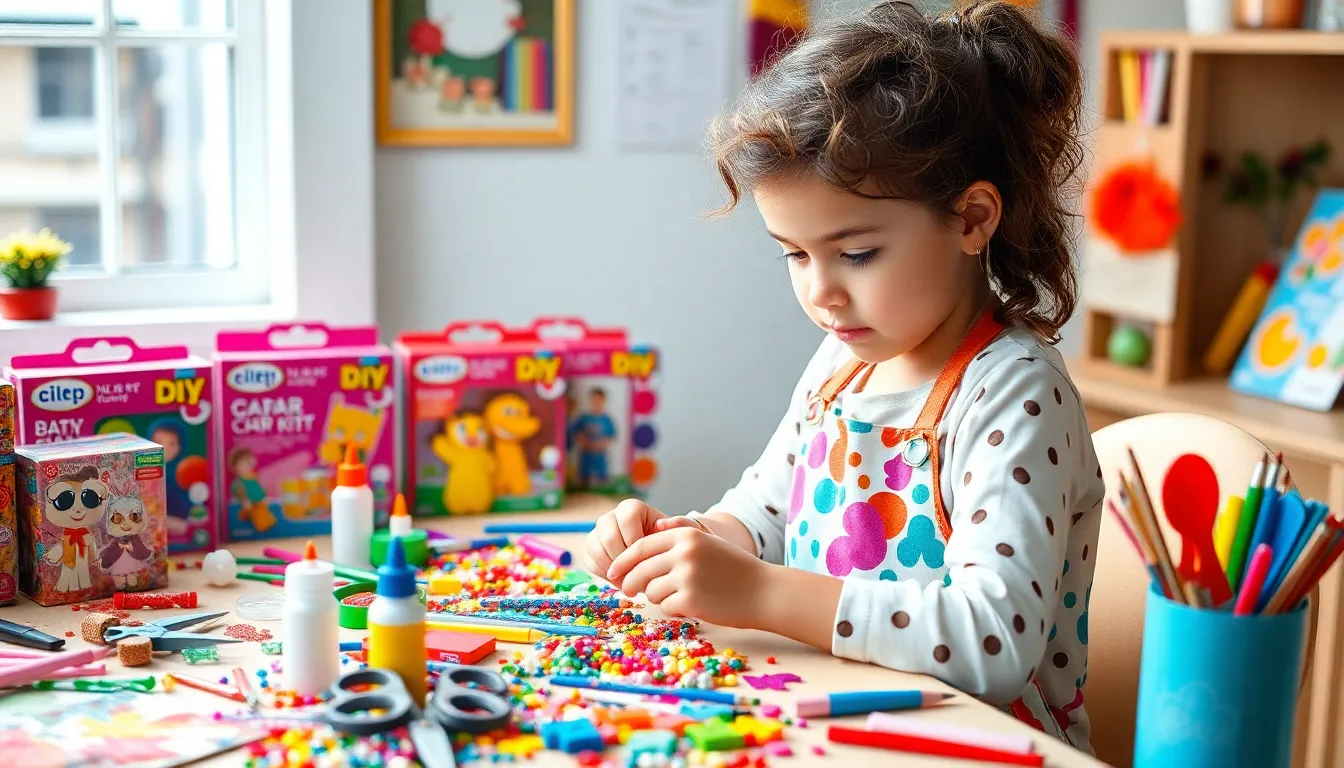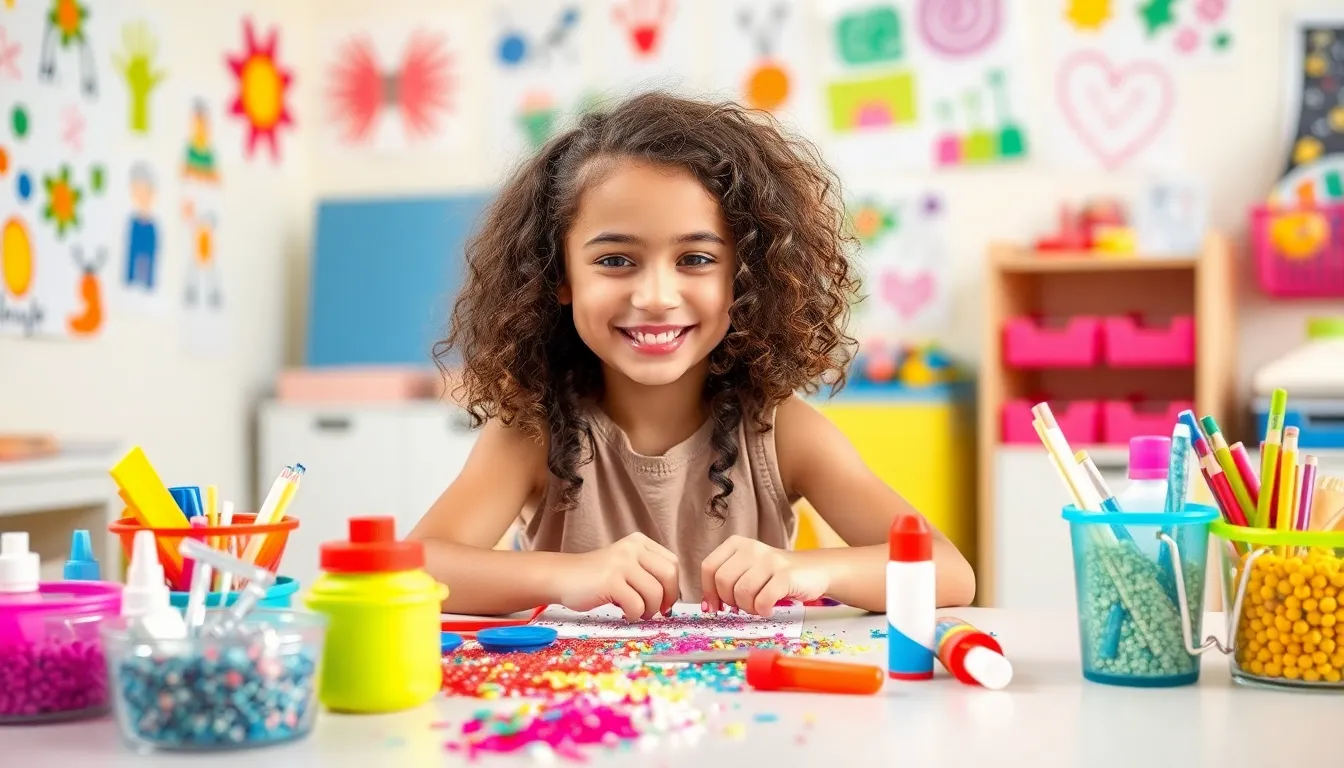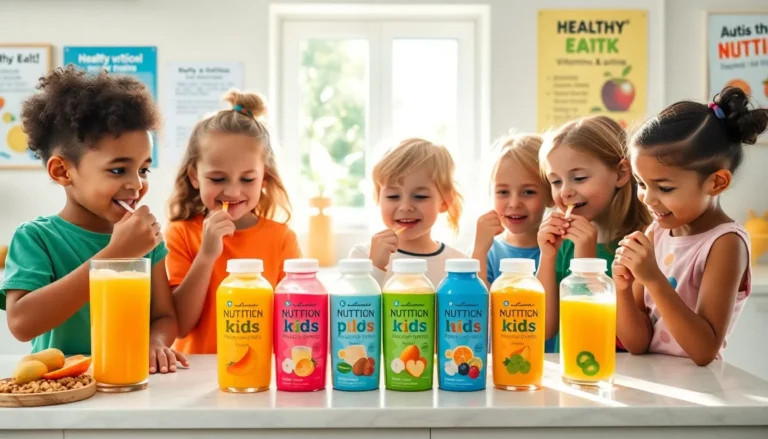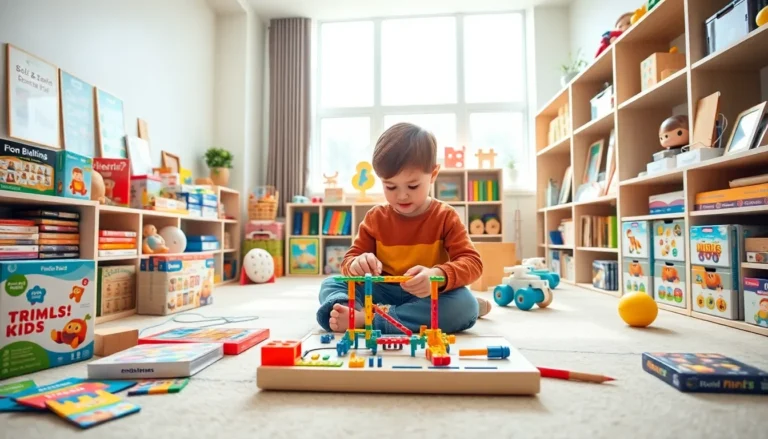In a world where screens dominate, DIY craft kits for kids are a breath of fresh air. These colorful boxes of creativity not only spark imagination but also keep little hands busy while parents sneak in a moment of peace. Who knew that glitter, glue, and a sprinkle of patience could lead to masterpieces that rival the greats?
Table of Contents
ToggleOverview of DIY Craft Kits for Kids
DIY craft kits for kids provide a structured way to explore creativity. Each kit typically includes all necessary materials, like paper, paint, and various tools. Kids can choose from themes such as painting, sculpting, or jewelry making. Crafting not only entertains but also enhances fine motor skills and problem-solving abilities.
Benefits are numerous. Engaging in hands-on projects fosters self-esteem as children complete their creations. Parents appreciate the reduction in screen time, giving children a tangible, productive activity. Craft kits also encourage independent thinking; kids often come up with unique ways to use materials.
Several popular kits cater to different age groups and interests. For instance, younger children may enjoy simple wood-building sets. Older children often prefer more complex projects that include sewing or advanced painting techniques. Many kits even incorporate educational elements, teaching kids about colors, shapes, and cultural crafts.
Affordability is another aspect to consider. Craft kits vary in price, ranging from $10 to $50, making them accessible to various budgets. Availability spans online retailers and local craft stores, ensuring options for every preference and convenience.
DIY craft kits for kids not only spark imagination but also create opportunities for bonding. Parents and children can work collaboratively on projects, leading to shared experiences and memories. These kits serve a dual purpose—entertainment and education—making them valuable tools for childhood development.
Benefits of DIY Craft Kits

DIY craft kits offer numerous benefits for children in today’s technology-driven environment. These kits not only spark imagination but also engage kids constructively, providing parents with time for relaxation.
Enhancing Creativity
Engaging in craft projects stimulates children’s creative thinking. Craft kits provide themed activities that inspire originality and innovation. Kids select colors, shapes, and designs, fostering individuality in their creations. Self-directed projects allow them to envision and realize their artistic concepts. Moreover, experimenting with different materials encourages resourcefulness. Creative expression becomes a source of joy, promoting emotional well-being.
Promoting Motor Skills
DIY craft kits significantly contribute to the development of fine motor skills. Children manipulate small components, enhancing hand-eye coordination with each task. Glueing, cutting, and assembling parts require dexterity and precision. These hands-on activities strengthen muscles in their hands and fingers, fostering greater control. Problem-solving opportunities arise when kids must figure out how to connect pieces or execute designs. As they practice, confidence grows, leading to improved coordination in other activities.
Popular Types of DIY Craft Kits
DIY craft kits come in various engaging formats, appealing to different interests and age groups. Below are popular types that inspire creativity in children.
Art and Painting Kits
Art and painting kits provide everything needed for young artists to express themselves. They often include canvases, brushes, and non-toxic paints. Children can explore techniques like watercolors, acrylics, or even mixed media. These kits not only foster creative expression but also enhance fine motor skills as children manipulate brushes and colors. By completing projects, kids gain confidence in their artistic abilities and develop a sense of achievement.
Building and Construction Kits
Building and construction kits invite children to construct models using various materials like wood or plastic. These kits frequently come with pre-cut pieces and simple instructions, making it easy for children to follow along. Engaging in this hands-on activity boosts problem-solving skills as kids figure out assembly. Collaboration is often encouraged when friends or family join in, enhancing social interaction. After constructing, children enjoy using their creations in imaginative play, further expanding their creative horizons.
Choosing the Right Kit for Your Child
Selecting the perfect DIY craft kit involves considering age, interests, and skill levels. Familiarity with these factors helps ensure a rewarding experience.
Age Appropriateness
Age-appropriate kits cater to children’s developmental stages. For younger children, options like simple wood-building or basic painting kits offer suitable challenges. Children aged 4 to 7 benefit from kits designed to enhance fine motor skills, such as finger painting or easy bead threading. Older kids, typically ages 8 to 12, thrive with more complex projects, like model kits or elaborate jewelry-making sets. Assessing age helps avoid frustration and allows kids to engage creatively.
Interest and Skill Level
Children’s interests significantly impact their enthusiasm toward craft kits. Art kits typically attract budding artists eager to explore different mediums. Construction kits appeal to hands-on learners fascinated by building and design. Skill level also plays a crucial role; beginners might prefer guided kits that offer clear instructions, while advanced crafters might enjoy open-ended projects that encourage independent creation. Aligning a kit with a child’s interests and skill level nurtures creativity and maintains engagement.
Tips for a Successful Crafting Experience
Establish a crafting area that’s well-organized and free of distractions. This space can be a table or a section on the floor where kids can access all materials easily.
Encourage kids to gather all their supplies before starting. Having items like scissors, glue, and paints within reach minimizes interruptions during the creative process.
Involve kids in reading the kit instructions together. Understanding the steps beforehand makes it easier for children to follow along, boosting their confidence.
Set realistic time frames for completing projects. Kids often thrive when given clear goals, so allotting specific time can enhance focus and productivity.
Utilize variety by introducing multiple kits. Different themes such as painting, building, or jewelry making keeps the experience fresh and exciting.
Celebrate their creations regardless of the outcome. Positive reinforcement encourages children to express themselves freely, fostering a willingness to try new techniques.
Supervise younger kids closely to ensure safety. Keeping an eye on sharp objects and messy materials enhances both safety and enjoyment.
Incorporate storytelling into the crafting experience. This strategy stimulates imagination, making the projects more engaging and meaningful.
Promote sharing and collaboration among siblings or friends. Crafting together cultivates teamwork, enhances social skills, and creates a sense of community.
Store completed projects securely to showcase achievements. Displaying art builds self-esteem, reinforcing the value of their hard work and creativity.
DIY craft kits for kids offer a fantastic way to nurture creativity and provide a break from screens. They not only entertain but also support essential skills like fine motor development and problem-solving. With a variety of themes and price points available, there’s a perfect kit for every child’s interests and age group.
These kits encourage independent thinking while fostering a sense of accomplishment. Parents can enjoy quality time with their children as they explore new projects together. By choosing the right kit and creating an organized crafting environment, families can maximize the benefits of these engaging activities. Embracing DIY craft kits can lead to memorable experiences and lasting skills that children will carry into the future.





